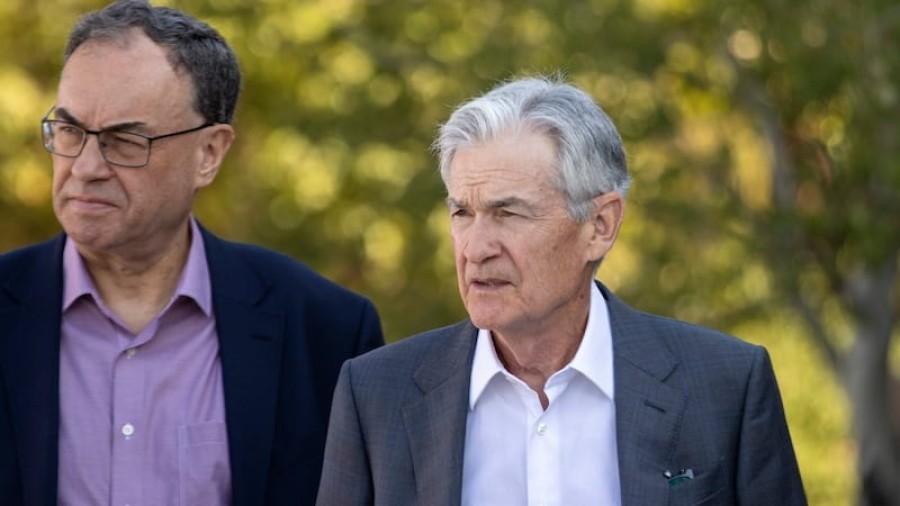Jerome Powell's New Priority is Protecting the US Labour Market

The US Federal Reserve's battle against inflation is all but won. Its new task: protect the jobs market. Fed Chairman Jerome Powell made that transition clear in his keynote address during the Kansas City Fed's Jackson Hole Symposium in Wyoming on Friday. In his highly anticipated remarks on the economic outlook, Mr Powell made no secret of what his new priority is.
“We will do everything we can to support a strong labour market as we make further progress towards price stability,” he said on Friday.
Inflation has been the Fed's priority for the past two years following a global surge. In response, the Fed raised its interest rates over the course of 2022 and 2023 to its current target range of 5.25 to 5.50 per cent.
Mr Powell spoke briefly on the inflation picture, noting his growing confidence that inflation – now at 2.5 per cent by the Fed's preferred measure – is on a sustained path towards 2 per cent.
Recession has been the key word for traders, economists and Fed watchers in recent weeks. Just two days after the Fed chose to hold rates steady following their July 30-31 meeting, a monthly jobs report sounded the alarm on the health of the US economy.
That report brought about a significant change in tone from Mr Powell. Where three weeks ago he said the labour market was close to 2019 conditions, he now says conditions are “less tight than just before the pandemic”.
The unemployment rate has risen by 60 basis points since the start of the year – from 3.7 per cent to 4.3 per cent. While still historically low, it has caught the Fed's attention.
A separate report from the Labour Department on Wednesday also showed the US added 818,000 fewer jobs than previously reported last year, underlining fears that the economy may not have been as strong as believed.
“The cooling in labour market conditions is unmistakable,” Mr Powell said.
A 'Now Hiring' sign on a FedEx Office in New York. Bloomberg
With the downside risk to employment now increasing, Mr Powell said the “the time has come for policy to adjust”, which all but ensured the end of the Fed's inflation fight and the beginning of a new battle to protect the jobs market.
The task for Mr Powell is now to build consensus on not only the timing of rate cuts, but the pace. Other members of the Fed appear to be headed in the direction of rate cuts as well, including those who held more hawkish points of view earlier this year.
The central bank will be looking towards September 6 for the next monthly jobs report to be released. Any other “unwelcome further weakening” could be the difference between a rate cut of 25 or 50 basis points.
“Our view is that a 25-basis-point cut in September is probably the easiest compromise” between Fed officials who want to move faster in cutting rates and those who might want to wait until the November or December meetings, Mr Tang said.
Although he voiced concerns about the health of the economy, Mr Powell said he believes the Fed is well-positioned to achieve its goals of restoring price stability without crashing the economy.
“The current level of our policy rate gives us ample room to respond to any risks we may face, including the risk of unwelcome further weakening in labour market conditions,” Mr Powell said.
Previous Story
- Key Trends and Insights in the Food Additives...
- Best Fashion Accessories of 2024 - Unique and...
- Ceiling Fan with Light - Industry Trends, Market...
- Navigating Trends and Strategies in the Industrial Chemicals...
- Growth Trends in Real Estate Development - Market...
- Insights into the Agricultural Products Market Trends and...
- Rubber Products Wholesale - Industry Trends and Market...
- Boj Releases Summary of Market Views on Bond...